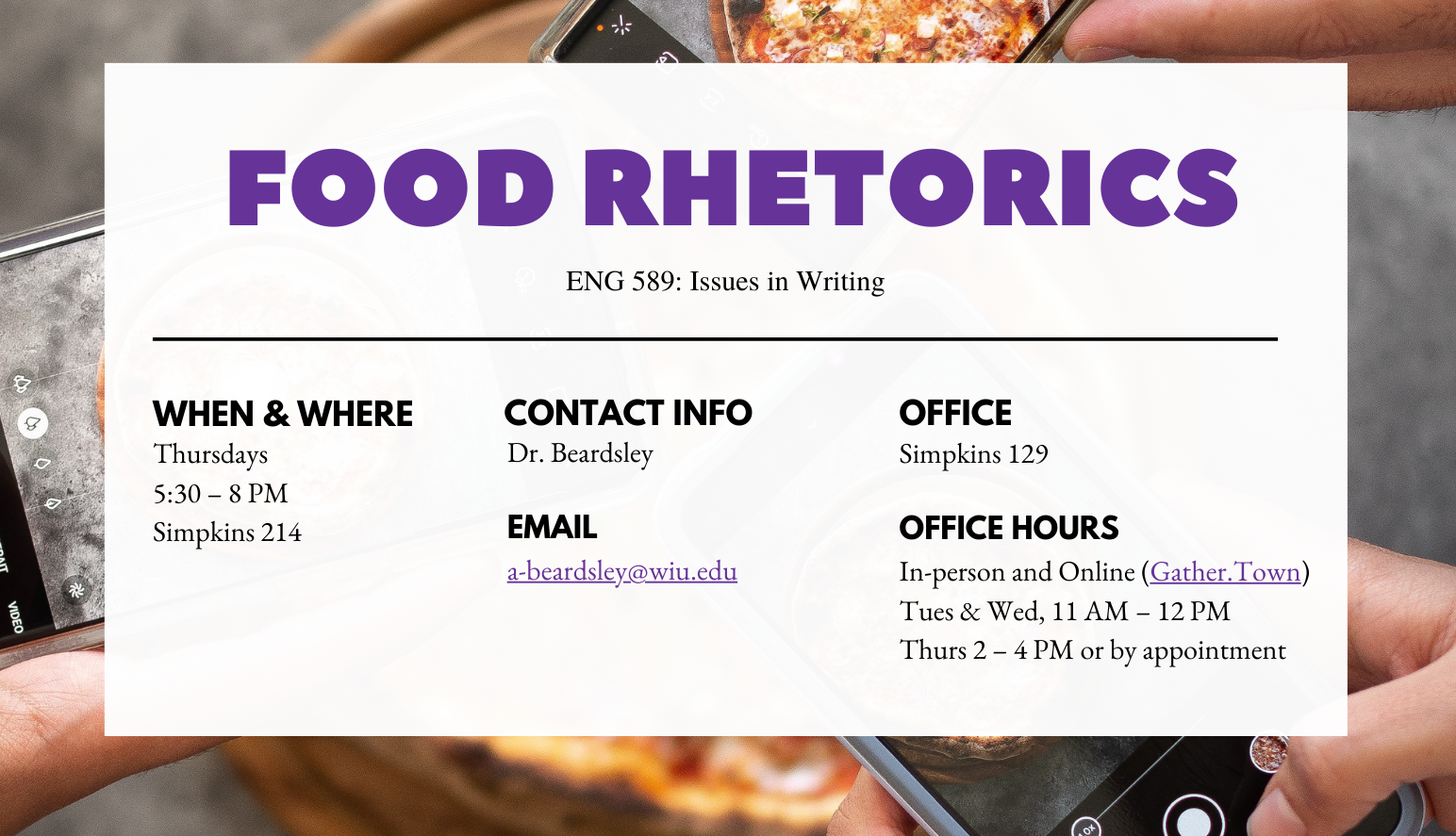Application: Using Craft Agency at Western Illinois University
By the time this book review is published, I will have completed my first year as a tenure-track assistant professor and writing center director at Western Illinois University. As I navigated my new roles, I turned to Chapter 6 to reflect on my pedagogy, administrative work, and scholarly pursuits. This section demonstrates how I incorporated craft agency to critically examine my work.
"Can You Compose With Food, and What Does That Look like?": Pedagogical Impact
In her interview on the podcast Pedagogue, Jody Shipka asked listeners what it might look like to compose with food (Wood, 2020). My ENG 589: Issues in Writing—Food Rhetorics course listened to Shipka's interview and used craft agency to emphasize the "rhetorical and political effects of materiality" (Gruwell, 2022, p. 144). I set up an embodied multisensory experience where students interacted with sourdough ingredients (starter, flour, and water) and a loaf of sourdough sandwich bread I had made the night before.
Read for a transcript of the Food Rhetorics course audio.
This short excerpt from our class captures our guided, embodied multisensory experience, prioritizing touch, smell, and taste above sight and sound to critically examine the notion of "higher" and "lower" senses.[1] After we wrote and ate, I asked the class, how can you use multisensory composing as an embodied research method for your paper? Bringing multisensory experiences like this into the classroom draws on Leigh Gruwell's (2022) pedagogical application of craft agency. Gruwell's in-class example includes discussing craftivism's yarn bombing (an act of street art or graffiti where knitted or crocheted pieces cover public items such as statues or trees) and designing craftivist campaigns to bring students' attention to who is excluded from such practices and foster a critical examination of power dynamics (p. 146). Our class used craft agency to begin to identify, resist, and rectify power inequities related to the senses and (dis)ability.
By invoking craft agency when I created this lesson, we were better equipped to critically examine food rhetorics and recognize the intra-actions between human and nonhuman agents.
Flexible Tutor Training: Administrative Application
Though Gruwell does not provide administrators with a roadmap, she calls for us to see our work "as a situated, flexible praxis" (p. 147). Indeed, being flexible is a valuable trait for administrative work. At the University Writing Center, I apply this situated flexibility to writing center consultant training. We start the fall semester with a three-day training that covers general policies and the three types of tutoring we offer (face-to-face, online, and e-tutoring), but our training doesn't end there.
Throughout the semester, consultants read writing center pedagogy like Diane Martinez and Leslie Olsen's (2015) chapter, which provided recommendations for online tutoring. Although I begin the semester with a topical outline for weekly training, I ask consultants what they would like to learn or learn more about during staff and one-on-one meetings to embrace a flexible praxis where they shape our training's focus. After a conversation around language and Vershawn Ashanti Young's (2010) "Should Writers Use They Own English?", a consultant asked me how they might determine when to comment on a language choice. I didn't have a concrete answer at that moment, but I told them I'd devise a plan. That's when I turned to Bridget Draxler, Anne Berry, Manuela Novoa Villada, and Victoria Gutierrez's (2022) article on linguistic social justice and sentence-level feedback. Now, we're incorporating Draxler et al.'s decision tree for addressing sentence-level concerns to guide comments around language and designing a decision tree based on our students.
Including Voices and Open-Access Publications: Research and Scholarly Practices
The last way I incorporate craft agency is exhibited in my scholarly agenda. An awareness of citation assemblages guides how I incorporate voices other than mine and where I seek article (and review) publication. I included students' voices in this webtext. I could've summarized their experiences, but asking their permission to use our class recording and how they wanted to be cited shows that I recognize the profound contributions to food rhetorics that graduate students make.
Additionally, access to scholarship plays an essential role in where I seek article and pedagogical publication. Though my list is short, both publications are in open-access resources. As Kairos's open access statement says, "Readers do not need to create an account or register with the journal. Readers of Kairos are free to read, print (if the design of webtext affords useful printing), download, distribute, search, or link to webtexts." Making publications available to readers without putting content behind paywalls—or even free reading accounts—means that the article or teaching resource is more widely available. The choice to submit to the Popular Culture Studies Journal and Writing Spaces was a conscious decision to make my contributions to the field accessible.
Overall, I find that incorporating craft agency and craft more broadly is a way to acknowledge the intra-actions the field depends upon. I encourage you to examine your pedagogical, administrative, and scholarly practices and ask yourself, how can I implement craft agency to recognize my ethical obligations and political commitments within the field?
1. Thank you to my food rhetorics class for participating in mulitsensory and spatial analysis activities throughtout the semester. Your participation (and work) impacts how I approach teaching and writing about food rhetorics. Return to the pedagogy section.
